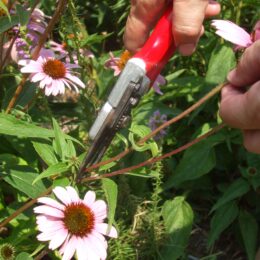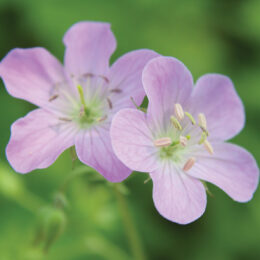The invasive spotted lanternfly has landed in northern Indiana. The pest was seen in Huntington County in July, just one year after its initial Hoosier sighting in Switzerland County.
The spotted lanternfly, easily identified by a splash of red on its wings and almost polka dot spots, is native to China and was first detected in the U.S. in 2014.
“The spotted lanternfly has the potential to be a major forest pest and economic threat, but we know very little about it,” said John Couture, associate professor of entomology and forestry and natural resources in Purdue University’s College of Agriculture. “While tree of heaven is the dominant preferred host for lanternfly, other economically valuable hosts are also preferred. Walnut, grape, and a variety of fruit trees are some of its favorite alternative hosts.”
Couture is heading up a program aimed at predicting the lanternfly’s movements so protections can be put in place to mitigate damage.
The insect uses a piercing mouthpart to feed on phloem, the tissue that transports nutrients throughout a tree. The pest doesn’t fly long distances, but it hitches rides in cargo and has spread following major transportation routes. Its local spread and how it moves once it has arrived in an area is less understood, Couture said.
Cliff Sadof, professor of entomology and Purdue Extension fellow, said this migration poses a significant agricultural risk to wine grape growers and honeybee and walnut tree producers. While the spotted lanternfly feeds on over 100 different types of plants, Sadof said, the insect can reproduce only when feeding on walnut trees, grape vines or tree of heaven.
“One thing in our favor is that the lanternfly feeds on the outside of the tree, so it is different from other stem boring pests, such as emerald ash borer,” said Couture, who also is a member of Purdue’s Center for Plant Biology and Hardwood Tree Improvement and Regeneration Center. “This means a broader range of mitigation strategies can be used, like different cultural practices and pesticide applications.”
Elizabeth Long, Purdue University assistant professor of horticulture crop entomology, said one of the best defenses that wine grape growers can take against the spotted lanternfly is learning to identify the life stages of the insect and remaining vigilant inspecting for them.
“Several of the insecticides grape growers currently use for other insect pests will also knock down the spotted lanternfly, so there is no need to make additional sprays as a preventative at this time,” Long said. “Looking to next season, the same strategy is needed. Keeping an eye out for spotted lanternfly hitchhikers and avoiding moving items that are likely to accidentally move insects along are key. Spotted lanternfly populations feeding on wine grape vines can severely reduce winter hardiness or kill the crop all together.
Brock Harpur, Purdue assistant professor of entomology, said beekeeping equipment can also provide the perfect spot for spotted lanternflies to lay eggs, allowing the insect to travel around the state.
“It is imperative for beekeepers to keep a careful eye out for signs of the spotted lanternfly in their area and on their equipment,” Harpur said. “Should the spotted lanternfly become established in all parts of Indiana, it is expected that honeydew, the secretion that spotted lanternfly leave behind, will become part of our late-summer honey harvest.”
Bees make good use of any honeydew they collect, Harpur said, but that isn’t desirable. If a colony does collect honeydew, a beekeeper may notice the honey has a smokey taste and smell and is less sweet than a typical honey. The honeydew tainted product has a darker brown color and a notable aftertaste.
Though the full-grown adults have beautiful coloring and patterns, spotted lanternfly eggs resemble a splash of mud, making them easy to overlook on large vehicles traveling from state to state. Homeowners should also remain vigilant in keeping populations in check, Sadof said, as the honeydew secretions from the insect are frequently spread across homes and structures and are extremely difficult to remove when dried.
The Indiana Department of Natural Resources asks all residents to search for and report spotted lanternfly sightings. Anyone spotting the insect should photograph it and send the image and location to DEPP@dnr.in.gov, or call 1-866-No-Exotic.




